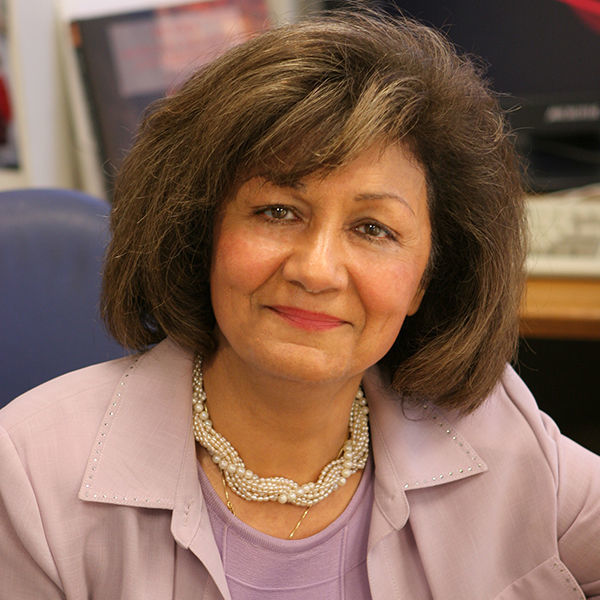Manijeh Razeghi
Northwestern

The Future of Quantum Semiconductor Science and Technology for IR Emitters and Detections
Nature offers us a full assortment of atoms, but Quantum engineering is required to put them together in an elegant way to realize functional structures not found in nature. A particular rich playground for Quantum era, is the so-called III-V semiconductors, made of atoms from columns III and V of the periodic table, and constituting compounds with many useful optical and electronic properties in their own right. Guided by highly accurate simulations of the electronic structure, modern semiconductor quantum devices are literally made atom by atom using advanced growth technology to combine these materials in ways to give them new proprieties that neither material has on its own. Modern mastery of atomic engineering, allows high-power and highly efficient functional devices to be made, such as those that convert electrical energy into coherent light or detect light of any wavelength and convert it into an electrical signal. This talk will present the future trends and latest world-class research breakthroughs that have brought semiconductor quantum engineering to an unprecedented level, creating IR light detectors and emitters over an extremely wide spectral range from 0.5 to 300 microns as well as their integration with Si photonics.
Bio
Manijeh Razeghi received the Doctorate d’état ES Sciences Physiques from the Université de Paris, France, in 1980. She was the Head of the Exploratory Materials Laboratory at Thomson-CSF (France) during the 80’s where she developed and implemented modern metalorganic chemical vapor deposition (MOCVD) vapor phase epitaxy (VPE), molecular beam epitaxy (MBE), GasMBE, and MOMBE for entire compositional ranges of III-V compound semiconductors from deep UV to THZ.. Developing these tools was fundamental in enabling her to achieve high purity semiconductor crystals with a consistency and reliability that was often unmatched, thereby leading to new physics phenomena in InP , GaAs, GaSb, and AlN based semiconductors and quantum structures. She realized the first InP Quantum wells and Superlattices and demonstrated the marvels of quantum mechanics in the low dimensional world. She joined Northwestern University, Evanston, IL, as a Walter P. Murphy Professor and Director of the Center for Quantum Devices in Fall 1991, where she created the undergraduate and graduate program in solid-state engineering. She has authored or co-authored more than 1000 papers, more than 34 book chapters, and 20 books, including the textbooks Technology of Quantum Devices (Springer Science Business Media, Inc., New York, NY U.S.A. 2010) and Fundamentals of Solid State Engineering, 4th Edition (Springer Science Business Media, Inc., New York, NY U.S.A. 2018). Two of her books, MOCVD Challenge Vol. 1 (IOP Publishing Ltd., Bristol, U.K., 1989) and MOCVD Challenge Vol. 2 (IOP Publishing Ltd., Bristol, U.K., 1995), discuss some of her pioneering work in InP-GaInAsP and GaAs-GaInAsP based systems. The MOCVD Challenge, 2nd Edition (Taylor & Francis/CRC Press, 2010) represents the combined updated version of Volumes 1 and 2. She holds more than 60 U.S. patents and has given more than 1000 invited and plenary talks. Her current research interest is in nanoscale optoelectronic quantum devices. Dr. Razeghi is a Fellow of MRS, IOP, IEEE, APS, SPIE, OSA, Fellow and Life Member of Society of Women Engineers (SWE), Fellow of the International Engineering Consortium (IEC). She received the IBM Europe Science and Technology Prize in 1987, the Achievement Award from the SWE in 1995, the R.F. Bun shah Award in 2004, IBM Faculty Award 2013, the Jan Czochralski Gold Medal in 2016, the 2018 Benjamin Franklin Medal in Electrical Engineering, and many best paper awards. She is an elected life-Fellow of SWE, IEEE, and MRS.